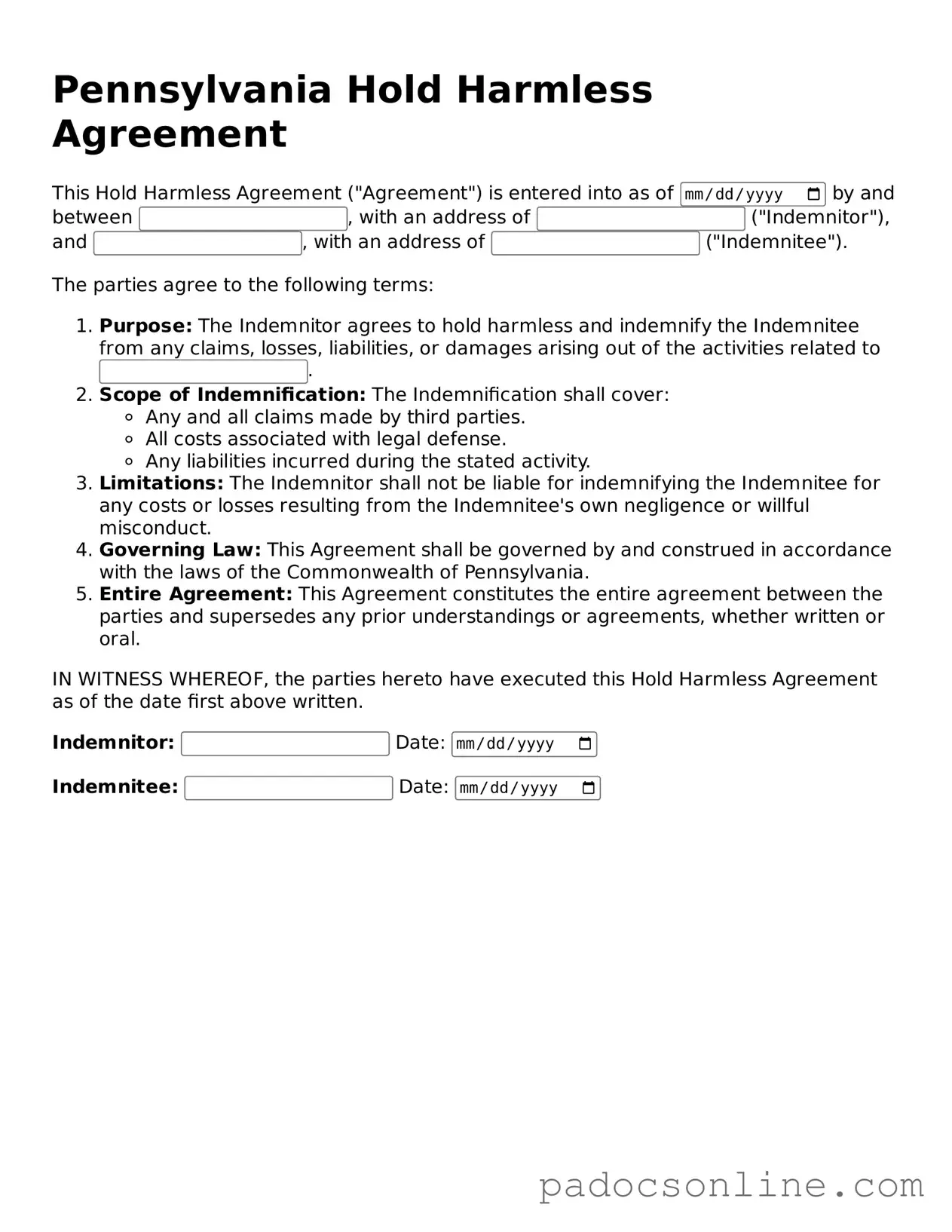Filling out a Pennsylvania Hold Harmless Agreement can be a straightforward process, but many individuals make common mistakes that can lead to complications. One frequent error is failing to clearly identify all parties involved. It’s essential to list not only the individual signing the agreement but also the organization or entity that is being held harmless. Omitting a party can create ambiguity and potentially invalidate the agreement.
Another mistake often seen is the lack of specificity in the language used. A Hold Harmless Agreement should clearly outline the scope of the agreement. Vague terms can lead to misunderstandings about what is covered. For instance, instead of saying “any damages,” it is better to specify “property damage” or “personal injury” to avoid confusion in the future.
Many people also neglect to read the entire document before signing. It is crucial to understand every clause and condition. Signing without comprehension can lead to unintended liabilities or responsibilities. Taking the time to review the agreement thoroughly can save individuals from future disputes.
Additionally, some individuals forget to include a date on the agreement. A date is vital for establishing when the agreement takes effect and can be important for legal timelines. Without a date, the enforceability of the agreement may be questioned.
Another common oversight is not having the agreement witnessed or notarized when required. While not all Hold Harmless Agreements need a witness, certain situations or jurisdictions may mandate it. Failing to follow these requirements can weaken the agreement's legal standing.
People also often make the mistake of assuming that a Hold Harmless Agreement protects them in all situations. It is important to understand that these agreements may not cover gross negligence or willful misconduct. Individuals should be aware of the limits of the protection provided by the agreement.
Lastly, some individuals overlook the importance of consulting a legal professional before finalizing the agreement. While it may seem like a simple form, seeking legal advice can help clarify any uncertainties and ensure that the agreement is valid and enforceable. A professional can provide insights that may not be apparent to someone unfamiliar with legal documents.
